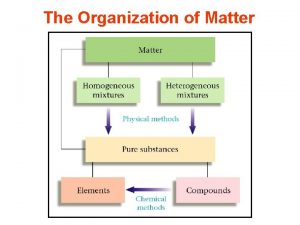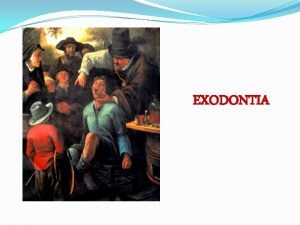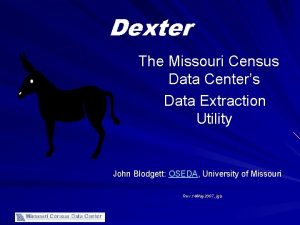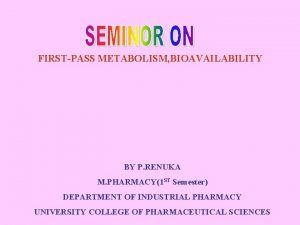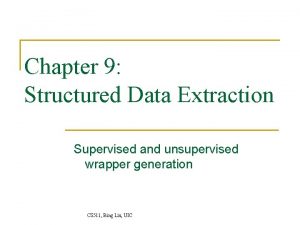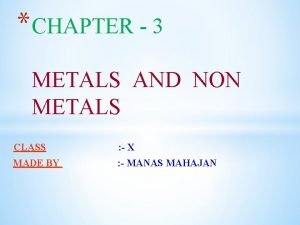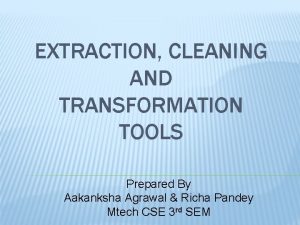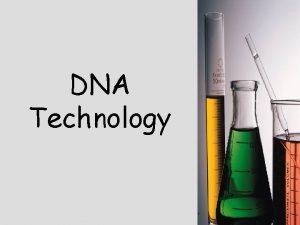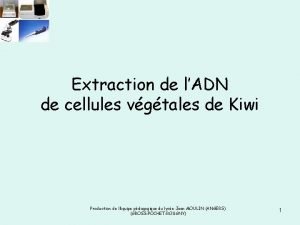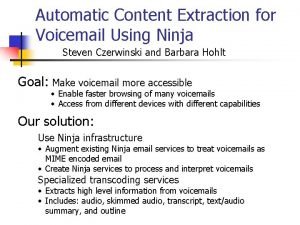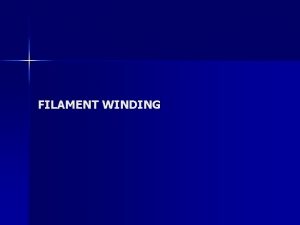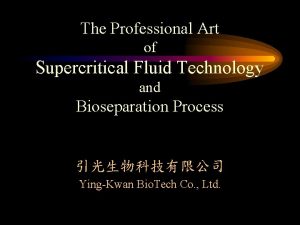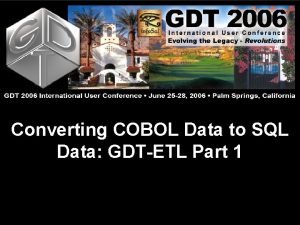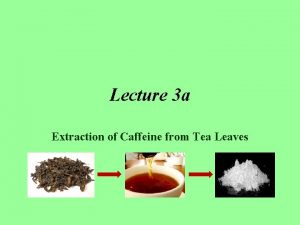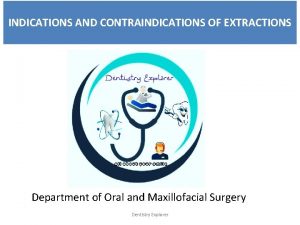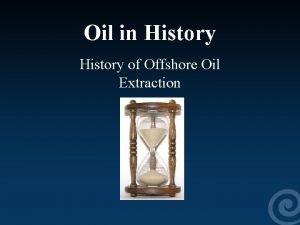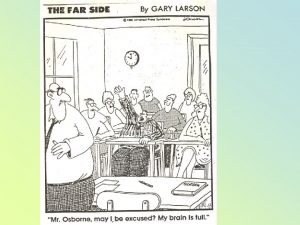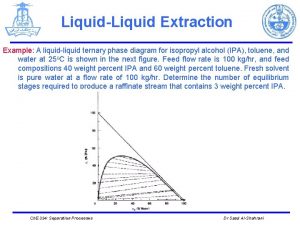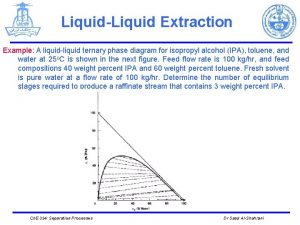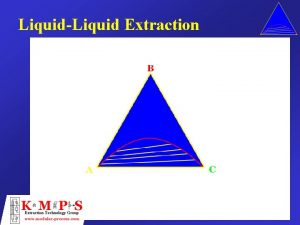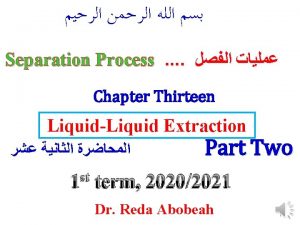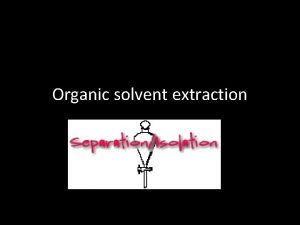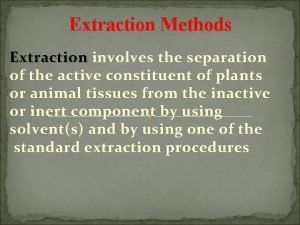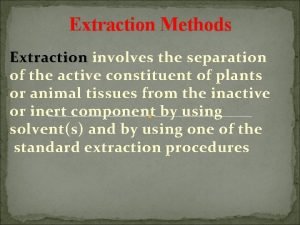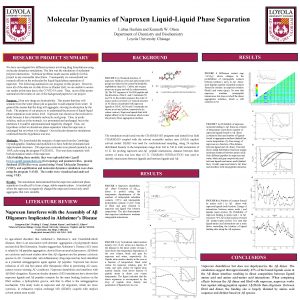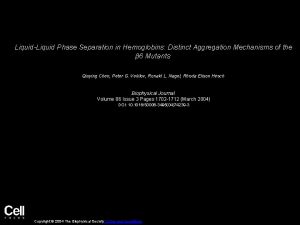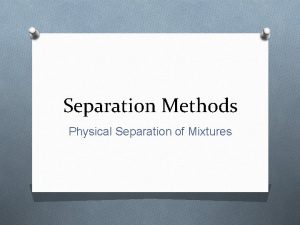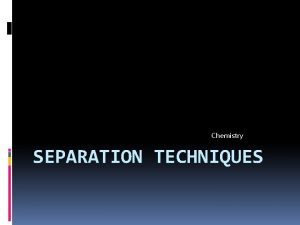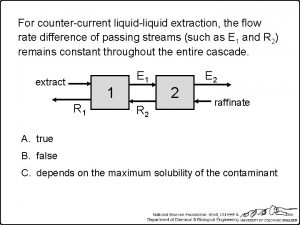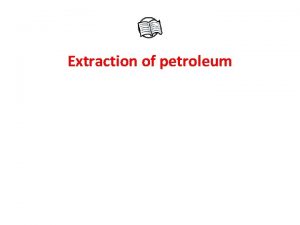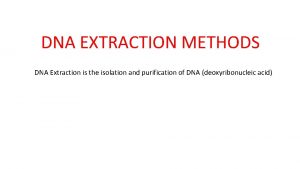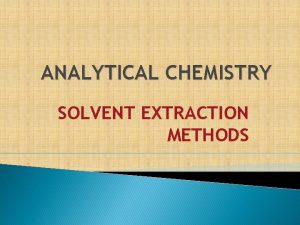Separation methods 1 LiquidLiquid Extraction Focus on 2






















![LLE One analyte component KP = [A]raffinate / [A]extractant KP = β * k LLE One analyte component KP = [A]raffinate / [A]extractant KP = β * k](https://slidetodoc.com/presentation_image/9bfcc157c10bbc7e4c638c50d0c61eed/image-23.jpg)


- Slides: 25

Separation methods 1 - Liquid-Liquid Extraction Focus on 2 - High-Performance Liquid Chromatography a) normal phase b) reversed phase Øion-pair c) ion exchange chromatography d) size exclusion chromatography (LLE) 3 - Supercritical fluid Extraction 4 - Solid Phase Extraction 5 - Capillary electrophoresis 6 - Capillary electrochromatography (SFE & SFC) (SPE & SPME) (CE, ZCE) (CEC) (HPLC) (NP) (RP) (IP-RP) (IEC) (SEC)

Ø Most separation methods employ two phases e. g. 1. Distillation vapor and liquid? ? ? 2. Liquid-liquid extraction extractant & raffinate 3. Chromatography mobile & stationary phase Ø The extractant in a multistage liquid-liquid extraction is similar to mobile phase in liquid chromatography Ø Chromatography mainly GC is thought of as similar to distillation Ø Applying the term theoretical plates to Gas Chromatography known for distillation

Ø Most chromatographic methods used to separate and quantify samples include additional steps in preparations of sample Ø These steps are referred to as preliminary treatments or sample clean up Ø More precisely are called preconcentration steps Ø These steps such as SPE & SPME are sometimes chromatographic in nature such as LSC Ø Some others such as LLE are separation steps similar to LLC. Ø Some stationary phases sometimes used for preconcentrations are made of material developed for GC or HPLC Ø Column chromatography, SPE and LLE are the most common methods of separations




Extraction Ø Classification of extraction techniques are as follows 1 - equilibrium versus preequibrium 2 - equilibrium versus steady state 3 - flow-through versus batch 4 - exhaustive versus non exhaustive Ø preequlibrium; contact between phases is broken before system reach equilibrium effectively nonequilibrium methods Ø steady state; refers to permeation technique such as membrane extraction operate by continuous steady state transport of analytes through membrane Ø flow-through; is a contact process as continuous (opposed to batch)


Comparison & Contrast of LLE vs. LLC



Liquid-liquid chromatography

Liquid-liquid chromatography

Liquid-liquid chromatography

Liquid-liquid chromatography

Liquid-liquid chromatography

Liquid-liquid chromatography

Liquid-liquid chromatography

Liquid-liquid chromatography

Liquid-liquid chromatography


![LLE One analyte component KP Araffinate Aextractant KP β k LLE One analyte component KP = [A]raffinate / [A]extractant KP = β * k](https://slidetodoc.com/presentation_image/9bfcc157c10bbc7e4c638c50d0c61eed/image-23.jpg)
LLE One analyte component KP = [A]raffinate / [A]extractant KP = β * k vs. LLC KC = [A]S / [A]M KP = β * k (β phase volume ratio, k retention factor, capacity factor, partition factor) β = [Vextractant/Vraffinate] β = [VM/VS] k = (mass of A)raffinate / (mass of A)extractant k = (mass of A)S / (mass of A)M k = V’R / VM = t’R / t. M Q = fraction extracted = 1 / [1 + k] k = [1 -Q] / Q R = v / u (always ≤ 1) R Retardation factor, v average speed of analyte, u average speed of mobile phase v = L/t. R, u = L/t. M, R = t. M/ t. R = VM /VR R = VM / [VM + VR] = 1 / [1 + k]

Two-analyte components α =( KP)A / (KP)B α = KB / KA = (V’R)B / (V’R)A = k. B / k. A α selectivity factor ≥ 1 better ( KP)A / (KP)B= 1 α selectivity or separation factor ≥ 1 better 5 Batch LLE Often one-step extraction using separatory funnel is sufficient Sometimes multi-step extraction is required to isolate larger amounts

Five consideration are involved in selecting the two liquid phases for extraction 1 - two phases must be immiscible 2 - phases should be saturated with each other before use to prevent change in volume 3 - the two phases must separate from each other quickly, forming no emulsion 4 - the recovery of the analyte from the extractant (or raffinate) 5 - the rate of the system to reach equilibrium
 Porter's generic strategies
Porter's generic strategies Cost focus and differentiation focus
Cost focus and differentiation focus Actor focus vs object focus
Actor focus vs object focus For adult
For adult Dewels method
Dewels method What is size separation
What is size separation Filtration of sand and salt
Filtration of sand and salt Https methodology.accenture.com
Https methodology.accenture.com Metal coping fpd
Metal coping fpd Wedge principle of elevators
Wedge principle of elevators Missouri census data center
Missouri census data center Hepatic extraction ratio
Hepatic extraction ratio Data extraction table example
Data extraction table example Extraction of metals class 10
Extraction of metals class 10 Hepatic acinus
Hepatic acinus Data extraction cleanup and transformation tools
Data extraction cleanup and transformation tools Spooling dna definition
Spooling dna definition Extraction adn kiwi
Extraction adn kiwi Automatic content extraction
Automatic content extraction Disadvantages of filament winding
Disadvantages of filament winding Temporal information extraction
Temporal information extraction Thar supercritical fluid extraction
Thar supercritical fluid extraction Cobol data extraction
Cobol data extraction Partition coefficient extraction
Partition coefficient extraction Contraindications for tooth extraction
Contraindications for tooth extraction Water extraction montarra
Water extraction montarra






